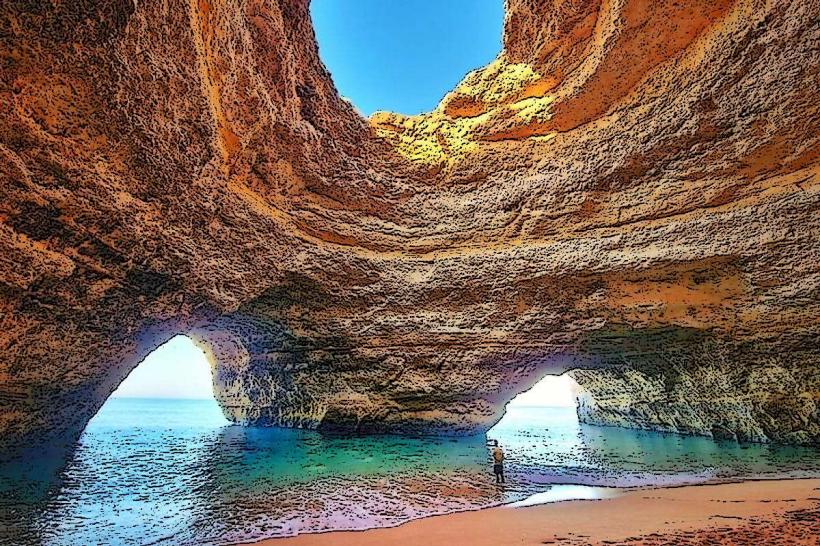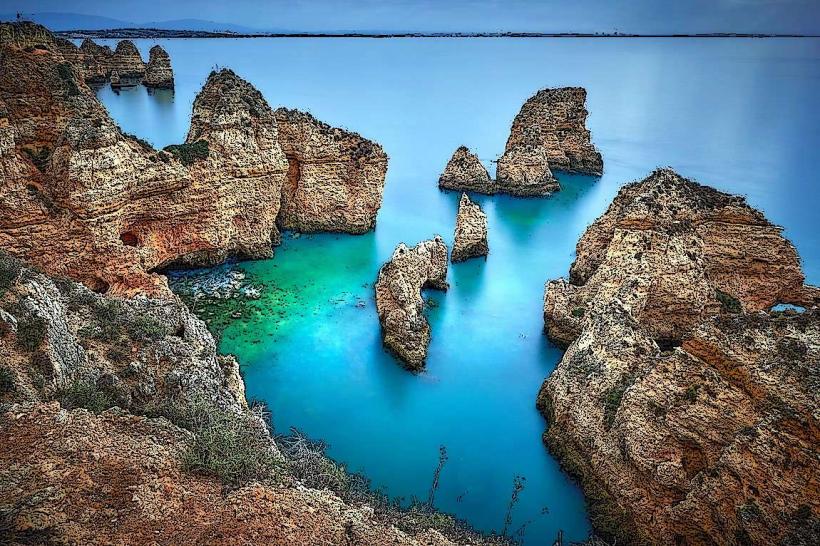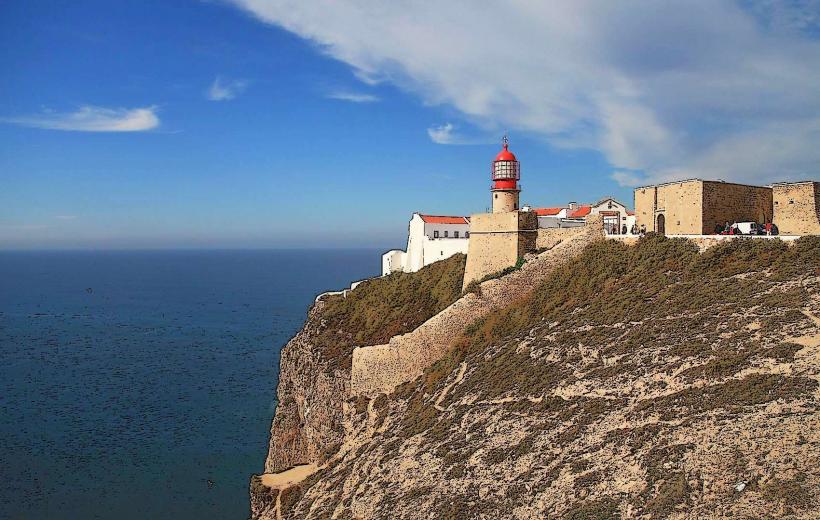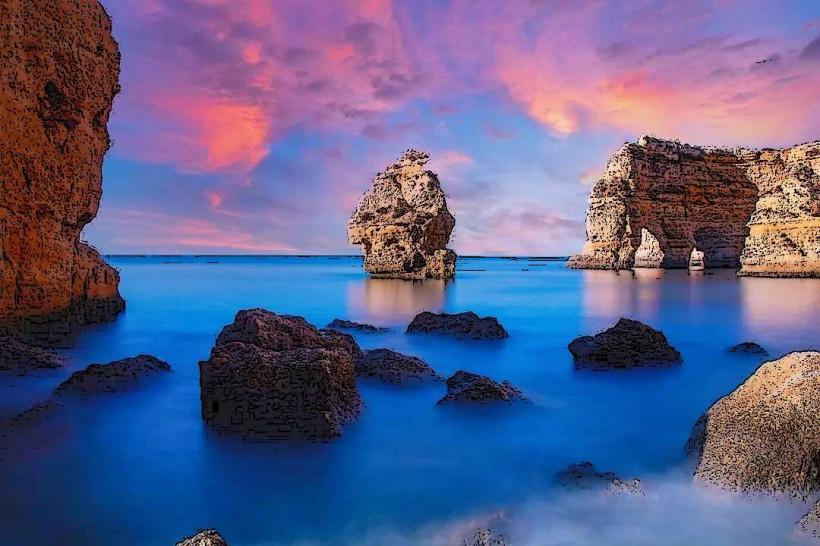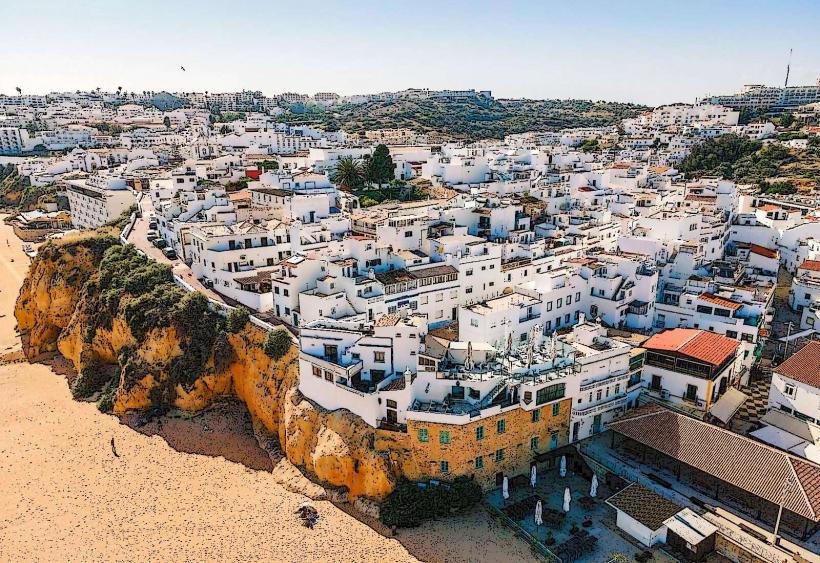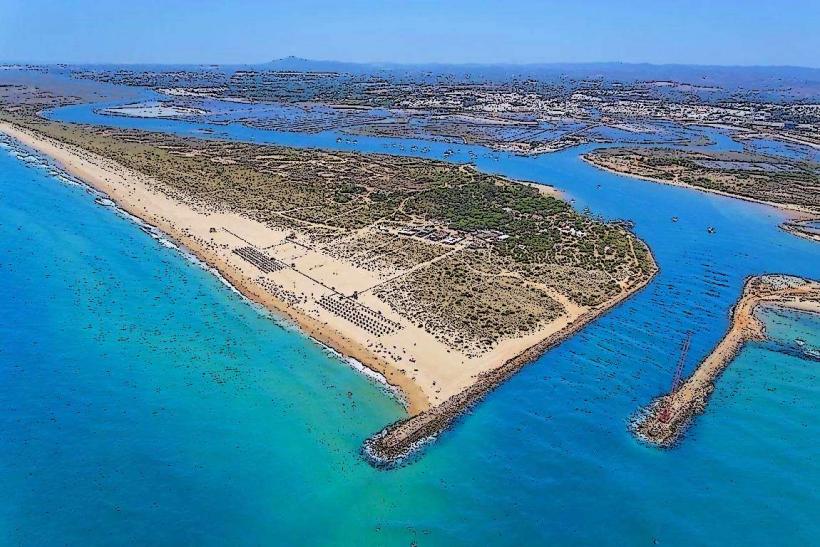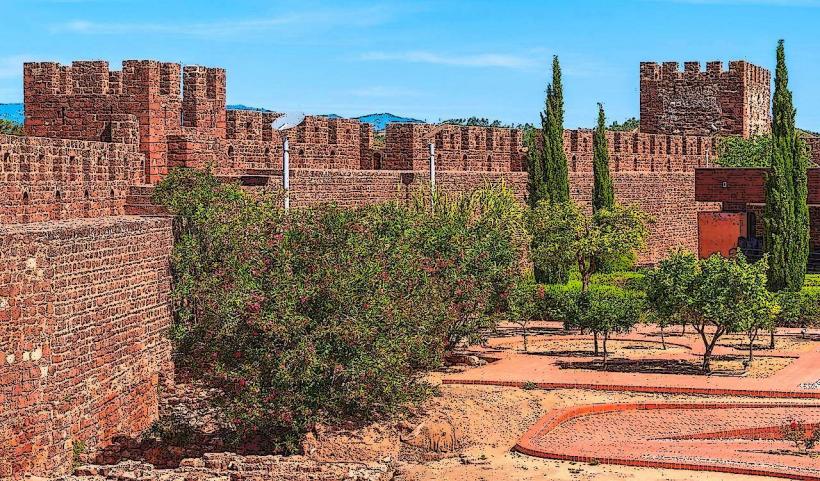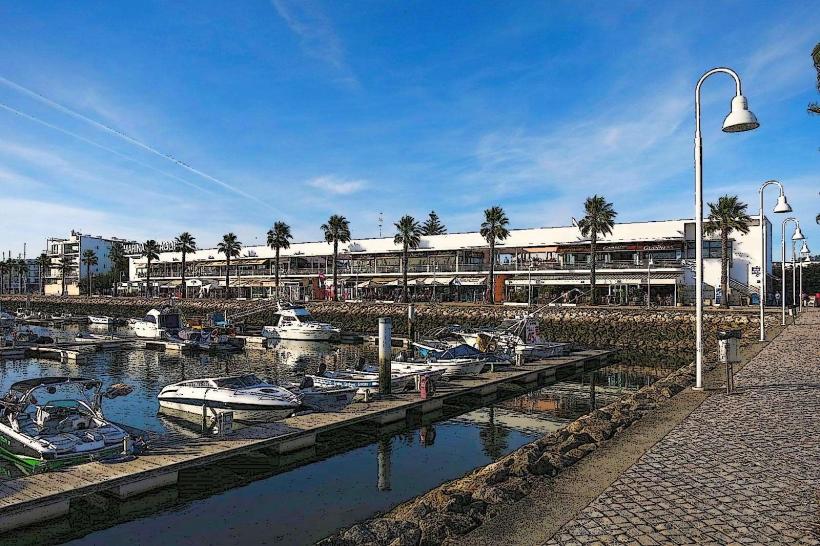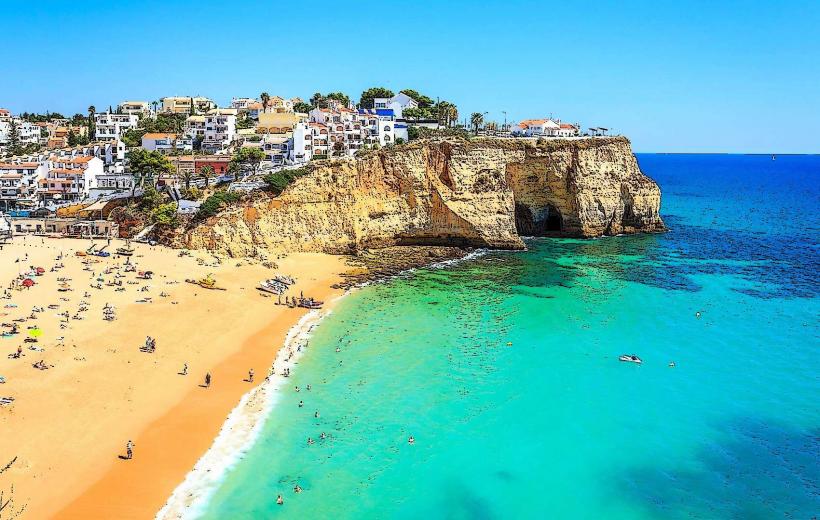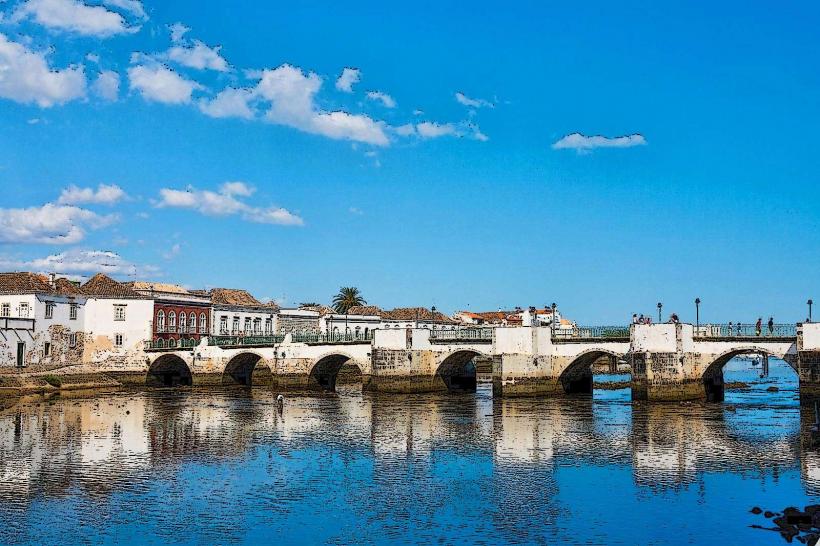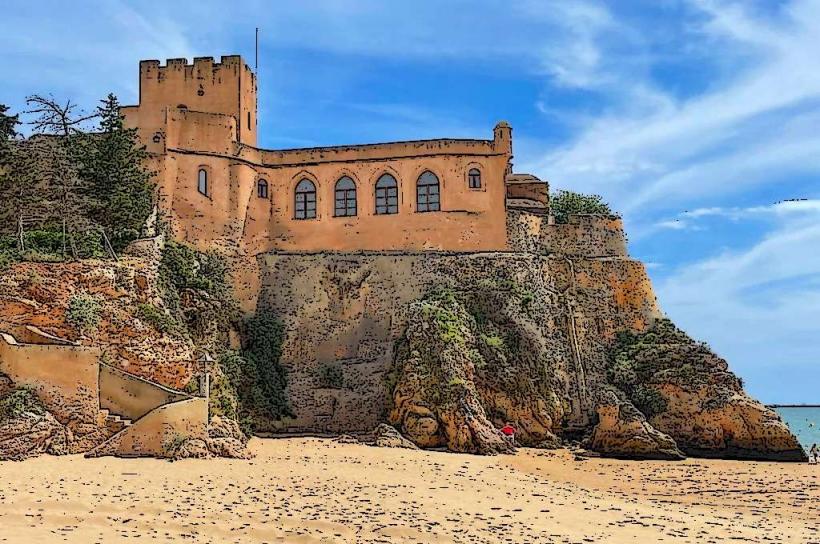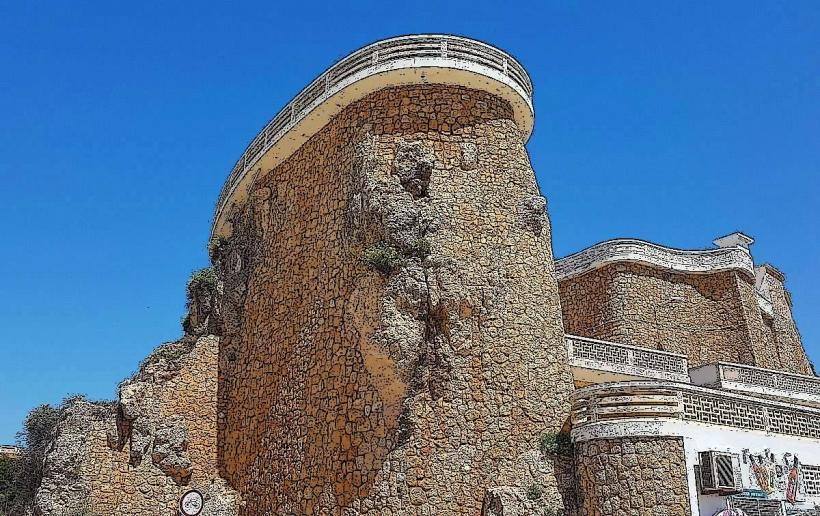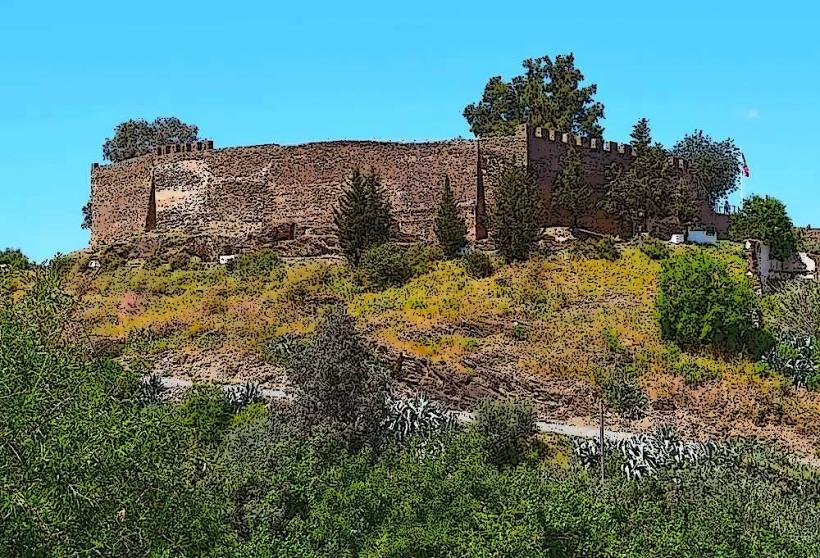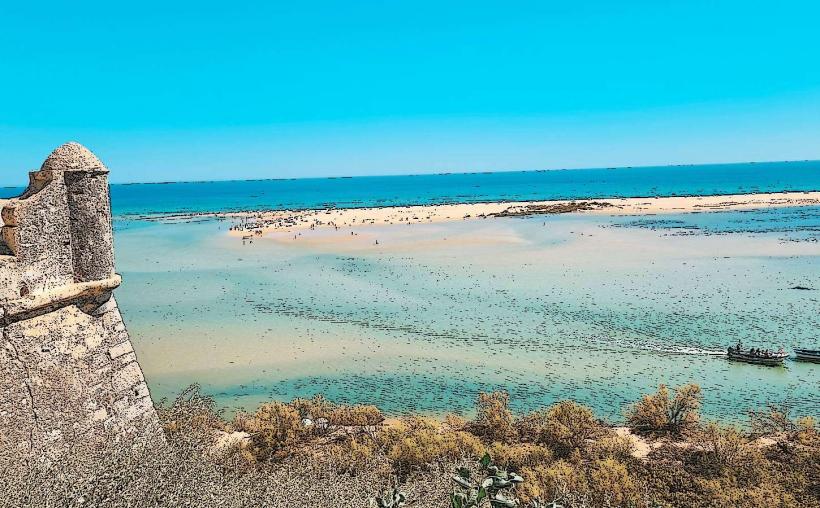Information
Landmark: Ria Formosa Natural ParkCity: Algarve
Country: Portugal
Continent: Europe
Ria Formosa Natural Park (Portuguese: Parque Natural da Ria Formosa) is a vast and ecologically rich wetland area located along the coast of Faro, in the Algarve region of southern Portugal. It is one of the most important natural reserves in Portugal, covering an area of approximately 170 square kilometers and stretching over 60 km of coastline. The park is a protected nature reserve and is recognized for its remarkable biodiversity, including a wide variety of bird species, marine life, and plant ecosystems.
1. Geography and Landscape
- Coastal Wetlands: Ria Formosa is a coastal lagoon system characterized by salt marshes, sandbanks, mudflats, and islands. It is formed by a series of barrier islands and shoals that protect the mainland from the open sea, creating calm, shallow waters ideal for numerous species of birds and marine life.
- Islands and Shores: The park is home to several islands, including Barreta Island, Culatra Island, Armona Island, and Tavira Island, which are accessible by ferry from Faro and other coastal towns. These islands are unspoiled and feature pristine beaches, making them a popular destination for tourists seeking tranquility, natural beauty, and outdoor activities.
- Ria Formosa Lagoon: The Ria Formosa Lagoon is the central feature of the park, with its extensive system of shallow waters, channels, and mudflats. This lagoon is fed by both tidal flows and freshwater sources, creating a dynamic and ever-changing ecosystem that supports a variety of wildlife.
2. Flora and Fauna
- Birdwatching Paradise: Ria Formosa is renowned for its importance as a birdwatching destination. It is considered one of the most important wetland areas in Europe for migratory birds. The park serves as a key stopover for birds traveling along the East Atlantic Flyway, particularly during the spring and autumn migration periods. Flamingos, herons, egrets, and spoonbills are just a few examples of the many bird species that can be spotted here. The park is also home to rare species like the purple heron and the avocet.
- Marine Life: The lagoon's shallow waters and rich mudflats are a thriving environment for a variety of marine species. Fish species like bass, mullet, and seabass are found in the waters, while the lagoon is also home to mollusks, crustaceans, and oysters. The park is an important area for marine life breeding and fishing.
- Flora: The park also features a diverse range of plant life, including salt-tolerant species such as samphire (also known as glasswort), seagrasses, and halophytes that thrive in the wetland ecosystem. The islands and surrounding areas are also home to dense pine forests, algarve scrub, and aromatic plants like rosemary and thyme.
3. Environmental Importance
- Protected Status: Ria Formosa was officially designated as a Natural Park in 1987 due to its ecological importance. It has also been recognized as a Ramsar site, a designation given to wetlands of international importance, particularly as a habitat for migratory birds. The park is also part of the Natura 2000 network, which aims to protect the most valuable and endangered species and habitats across Europe.
- Conservation Efforts: Due to its importance as a habitat for both resident and migratory species, Ria Formosa is the subject of various conservation initiatives. These efforts focus on preserving the natural ecosystems, protecting bird habitats, and ensuring the sustainable management of local fisheries. Human activities such as construction, pollution, and overfishing are monitored to maintain the park's ecological balance.
4. Activities and Attractions
- Birdwatching: Birdwatching is one of the most popular activities in Ria Formosa. The park offers several observation points and walking trails, where visitors can observe the variety of bird species that inhabit or pass through the area. The Culatra Island, Faro Island, and Barreta Island are particularly known for their excellent birdwatching opportunities.
- Hiking and Walking: There are several hiking trails that wind through the park, providing opportunities for nature walks and exploration. The trails allow visitors to observe the park’s diverse ecosystems, including salt marshes, dunes, and woodlands. Some trails also lead to the beaches on the islands, providing a chance to enjoy the scenic beauty of the coastline.
- Kayaking and Boat Tours: Exploring Ria Formosa by boat or kayak is another popular activity. Visitors can take guided boat tours or rent kayaks to explore the lagoon and its many channels. This offers a unique perspective on the park's biodiversity, allowing for close-up views of the wetlands, birdlife, and coastal habitats.
- Fishing: Fishing has traditionally been a significant activity in Ria Formosa, and visitors can experience traditional fishing techniques such as net fishing and clam digging. The park’s rich marine life makes it a great spot for anglers, and there are also fishing tours available.
- Beaches: The islands within Ria Formosa, including Culatra, Barreta, and Armona, offer some of the most beautiful and unspoiled beaches in the Algarve. These beaches are ideal for swimming, sunbathing, and enjoying the stunning natural surroundings. The beaches are typically quieter than those in more developed parts of the Algarve, making them perfect for relaxation.
5. Access and Getting Around
- Ferry Services: The best way to access Ria Formosa’s islands is by ferry, which departs regularly from the port of Faro. Ferries are available to various islands, including Culatra, Barreta, and Armona, where visitors can enjoy the pristine beaches and explore the nature trails. Most ferries operate during the spring and summer months, although some services are available in the off-season.
- Guided Tours: For those looking to learn more about the park’s ecology, guided tours are available. Local guides offer tours focused on birdwatching, marine life, and the general flora and fauna of the park. These tours can be taken by boat or on foot and are a great way to gain deeper insights into the park’s natural environment.
- Transportation: In addition to ferries, buses and taxis can be used to access Faro and nearby towns. Visitors can also rent bicycles to explore the park’s inland areas.
6. Best Time to Visit
- Spring and Autumn: The best time to visit Ria Formosa is during the spring (March to May) and autumn (September to November). These seasons offer pleasant weather, with mild temperatures and fewer tourists than the summer months. During these times, migratory birds are more likely to be spotted, and the landscapes are at their most vibrant.
- Summer: Summer (June to August) is the peak tourist season, with warmer temperatures, long days, and more visitors. While it is the best time for beach activities, it can be crowded, especially on the islands. However, this is also when the islands and beaches are most lively, with a greater number of tours and activities available.
7. Conclusion
Ria Formosa Natural Park is a must-visit destination for nature lovers, birdwatchers, and anyone looking to experience the unspoiled beauty of the Algarve. Its rich ecosystems, abundant wildlife, and tranquil environment make it a perfect escape from the bustling towns and beaches. Whether you're exploring by foot, boat, or kayak, the park offers a variety of ways to enjoy its beauty and learn about its importance as a wetland habitat. Ria Formosa’s unique mix of biodiversity, natural landscapes, and peaceful beaches make it one of the Algarve’s most treasured natural spaces.

